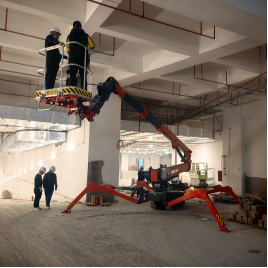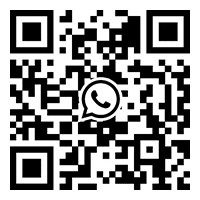Application of spider lift in archaeology
Release time:
2025-02-10
Application of spider lift in archaeology
Spider Lifts are not widely used in archaeology at present, but similar equipment or related technologies have potential application value in the field of archaeology. The following are some related analyses:
1. On-site excavation and cleaning
Advantages of aerial work: The spider lift has a flexible arm and adjustable legs, which can work stably on narrow or uneven terrain at the archaeological site and reach higher positions. When excavating large sites, such as ancient city walls, palace sites, etc., if it is necessary to observe, measure or clean up the high-altitude building structures, murals, carvings, etc. in detail, the spider lift can provide a safe and stable aerial work platform, avoid the construction of complex scaffolding, and improve work efficiency.

2. Relics extraction and transportation
Operation in special environments: In some special archaeological environments, such as caves, cliffs or near underwater sites, traditional handling equipment is difficult to reach or operate. The spider lift's compactness, flexibility and multi-terrain adaptability make it possible to become an effective tool for the extraction and transportation of cultural relics. For example, precious cultural relics were found in cave sites in mountainous areas, but the cave entrance was narrow and the terrain was rugged. The spider lift can enter the cave with its narrow body and retractable arm and extract the cultural relics safely.
3. Site mapping and monitoring
Equipped with mapping equipment: The spider lift can be used as a mobile mapping platform, equipped with laser scanners, total stations, high-definition cameras and other mapping equipment to conduct all-round, high-precision mapping and data collection of archaeological sites. By measuring at different positions and angles, detailed information such as the three-dimensional model, topography, and building structure of the site can be obtained, providing important data support for archaeological research and site protection.
Long-term monitoring site: In the long-term monitoring of archaeological sites, the spider lift can do monitoring work and install various environmental sensors, such as temperature, humidity, light, vibration, etc., to monitor the environmental changes of the site in real time. This is of great significance for protecting the site from damage by natural factors and human activities, especially for some sites that are vulnerable to weathering, erosion or theft.
4. Virtual archaeology and display
Virtual reality experience: Using the high-definition images and three-dimensional data collected by the spider lift at the site, virtual reality (VR) and augmented reality (AR) experiences can be created, allowing archaeologists and the public to experience the original style and excavation process of the archaeological site in person. This virtual archaeological technology can not only be used for academic research and educational promotion, but also provide new ideas and methods for the protection and management of sites.
Digital exhibition display: Combining the data collected by the spider lift with digital exhibition technology, detailed information on archaeological sites and cultural relics can be displayed in museums or online platforms, including their discovery process, historical background, cultural value, etc. Through interactive display methods, the audience can have a deeper understanding of the charm and importance of archaeology and enhance the public's awareness of cultural heritage protection.
Latest News
Application of spider lift in archaeology
2025-02-10



